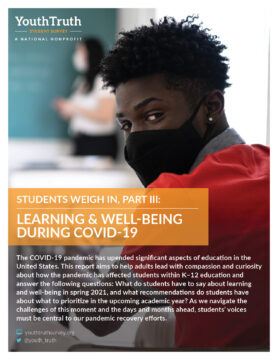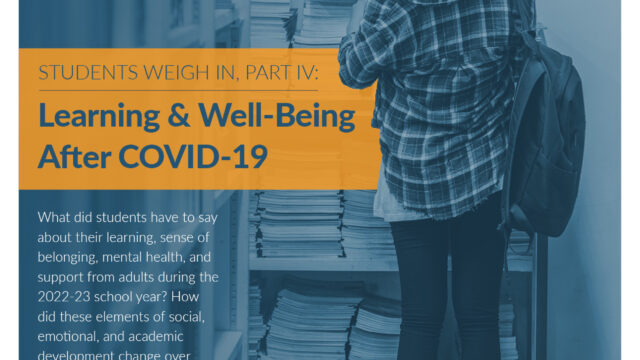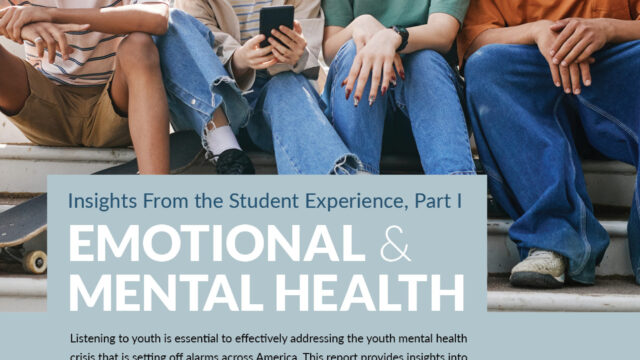Research Report
Students Weigh In, Part III: Learning & Well-Being During Covid-19
- Academic Challenge & Expectations
- Belonging
- Emotional & Mental Health
- Learning Through COVID-19
- Obstacles to Learning
- Postsecondary Planning
- School Culture
Overview
The COVID-19 pandemic has upended significant aspects of education in the United States. This report aims to help adults lead with compassion and curiosity about how the pandemic has affected students within K–12 education and answer the following questions: What do students have to say about learning and well-being in spring 2021, and what recommendations do students have about what to prioritize in the upcoming academic year?

The COVID-19 pandemic has upended significant aspects of education in the United States. This report aims to help adults lead with compassion and curiosity about how the pandemic has affected students within K–12 education and answer the following questions: What do students have to say about learning and well-being in spring 2021, and what recommendations do students have about what to prioritize in the upcoming academic year? As we navigate the challenges of this moment and the days and months ahead, students’ voices must be central to our pandemic recovery efforts.
-

FINDING 1: Social, Emotional & Academic Development
While students’ perceptions of learning returned to pre-pandemic levels this spring, there is cause for concern about students’ social and emotional well-being. Students offer insights on how technology can help or hinder learning.
-

FINDING 2: Obstacles to Learning
The overall number of obstacles to learning for students is down. However, inequitable experiences and compounding barriers persist, especially for Black and Latinx learners.
-

FINDING 3: Respect & Teacher Support
Students felt more respect from adults during the pandemic as well as increased academic support from teachers. However, respect and teacher support are experienced unevenly across student groups.
-

FINDING 4: Plans for the Future
Fewer students plan to go to college. Students offer ideas for making access to higher education more equitable.

